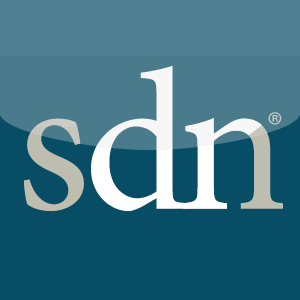near_airport
New Member
- Joined
- May 29, 2024
- Messages
- 7
- Reaction score
- 3
Hi all,
Inspired by previous threads (which I have included below), I wanted to compile some up-to-date information on predoctoral awards across NIH funded MSTPs. I did my best to collect data on the number of currently enrolled trainees eligible for NRSA funding across each program to get a more accurate idea of funding rates, and plotted it for a better overall look at the data. Eligible trainees were defined as trainees currently in the thesis phase of their programs. The funding rate makes the (generous) assumption that 100% of eligible trainees in a given program apply for the F30/F31 predoctoral grant, which fails to account for trainees with research interests that are either non-biomedical or in an area where the corresponding NIH IC does not fund an F30 (NINDS, NIAMS, NLM).
This data is limited in that it does not capture the number of active non-NRSA predoctoral grants (e.g. NDSEG, AHA, Hertz, etc), which artificially decreases the percentage of funded students. Additionally, the data is most likely not up to date with regards to newly funded applications.
I used the NIGMS TWD Dashboard, AAMC Table B-12, and double-checked my numbers based on information provided by individual program websites. However, this does not guarantee that this data is free of errors, and I would appreciate any feedback and/or corrections. An additional point of interest is that UC Davis has both a non-NIH funded MD/PhD program, and a NIGMS T32 funded DVM/PhD program, whose data is included below.
As mentioned by Neuronix, the data is further complicated because not all NIH ICs fund F30 grants (NINDS, NIAMS, and NLM), and individual trainees may choose not to submit an F30 due to a lack of appropriate IC. So the data is further biased based on the individual strengths of a given program and the research interests of the student body.
Finally, this JCI article that looks at longitudinal impact of NRSA funding on future K (postdoctoral) and R (independent) funding.


 forums.studentdoctor.net
forums.studentdoctor.net

 forums.studentdoctor.net
forums.studentdoctor.net

 forums.studentdoctor.net
forums.studentdoctor.net

 forums.studentdoctor.net
forums.studentdoctor.net
Inspired by previous threads (which I have included below), I wanted to compile some up-to-date information on predoctoral awards across NIH funded MSTPs. I did my best to collect data on the number of currently enrolled trainees eligible for NRSA funding across each program to get a more accurate idea of funding rates, and plotted it for a better overall look at the data. Eligible trainees were defined as trainees currently in the thesis phase of their programs. The funding rate makes the (generous) assumption that 100% of eligible trainees in a given program apply for the F30/F31 predoctoral grant, which fails to account for trainees with research interests that are either non-biomedical or in an area where the corresponding NIH IC does not fund an F30 (NINDS, NIAMS, NLM).
This data is limited in that it does not capture the number of active non-NRSA predoctoral grants (e.g. NDSEG, AHA, Hertz, etc), which artificially decreases the percentage of funded students. Additionally, the data is most likely not up to date with regards to newly funded applications.
I used the NIGMS TWD Dashboard, AAMC Table B-12, and double-checked my numbers based on information provided by individual program websites. However, this does not guarantee that this data is free of errors, and I would appreciate any feedback and/or corrections. An additional point of interest is that UC Davis has both a non-NIH funded MD/PhD program, and a NIGMS T32 funded DVM/PhD program, whose data is included below.
As mentioned by Neuronix, the data is further complicated because not all NIH ICs fund F30 grants (NINDS, NIAMS, and NLM), and individual trainees may choose not to submit an F30 due to a lack of appropriate IC. So the data is further biased based on the individual strengths of a given program and the research interests of the student body.
Finally, this JCI article that looks at longitudinal impact of NRSA funding on future K (postdoctoral) and R (independent) funding.

Data: F30s and MD/PhD programs, program size
Hey All, 3 years ago @Fencer posted some data on NIH F30 NRSA awards and the size of MD/PhD programs. Because I've been playing around with ggplot2 in R and was interested to see if anything had changed since, I followed his methodology and used the NIH RePORTER system to search for active...

My 2020 MD-PhD Program Benchmark Data Compilation
Hi everyone, While trying to juggle MCAT studying and research, I've begun panicking thinking that I’ll have no chance of getting into any MD/PhD programs next cycle and my future will be abysmal (as I do from time to time :laugh: ). Because of that, I've turned to digging around for data to...

NIH F30 NRSA awards and Size of MD/PhD Programs
The NIH F30 NRSA (or the F31) is probably the most prestigious award that MD/PhD students can earn by themselves. This funding mechanism provides funding for MD/PhD students to pursue their research as well as pay for 2 years of medical school. MSTPs have on average 10-25% of their positions...

Updated for 2018: F30s and MD/PhD Programs
After looking at the post @Lucca made in 2016, I decided to make an updated one with 2018 data. Partly because I wanted to know how the program I chose was doing, but mostly because I didn't want to start looking for housing. I got the data the same way: use the NIH RePORTER system to find all...
Attachments
Last edited:

